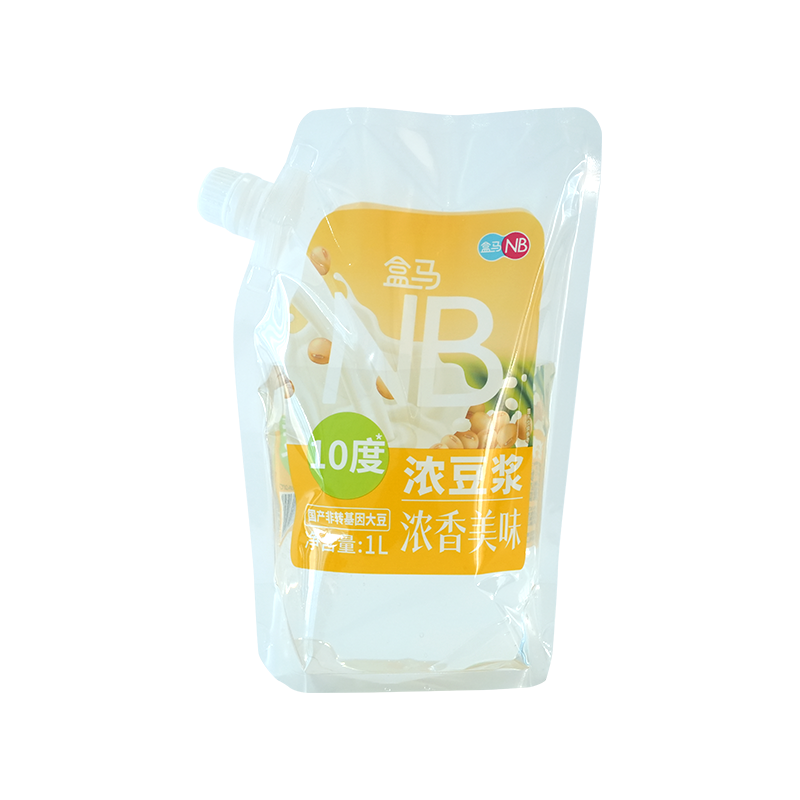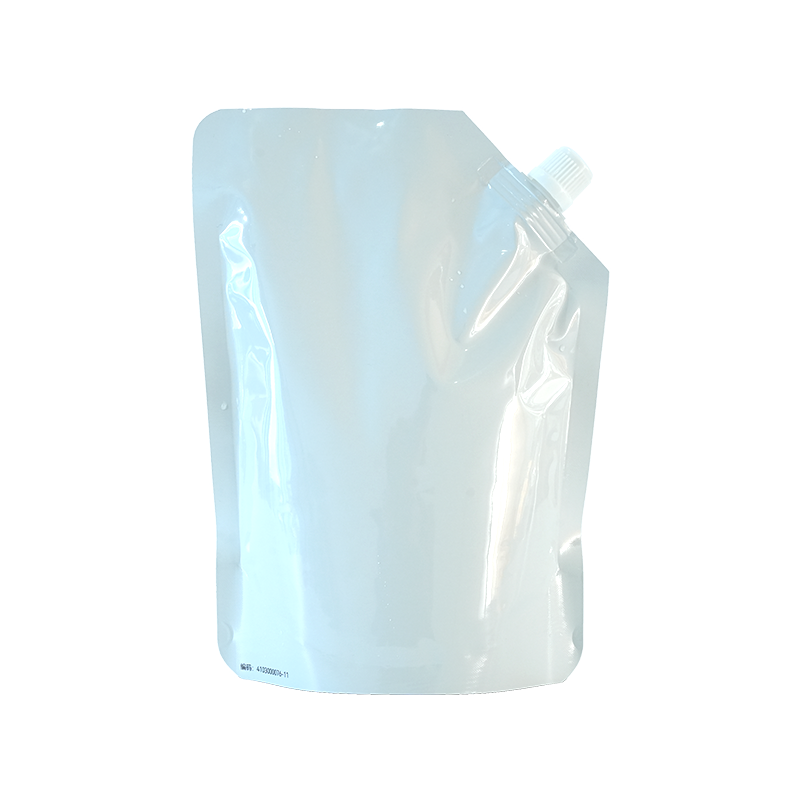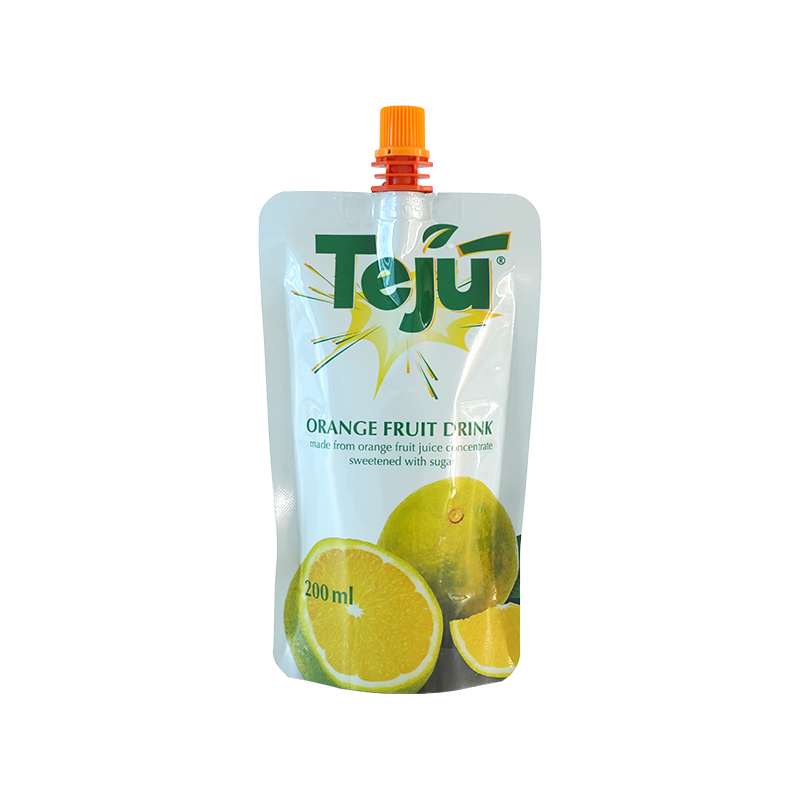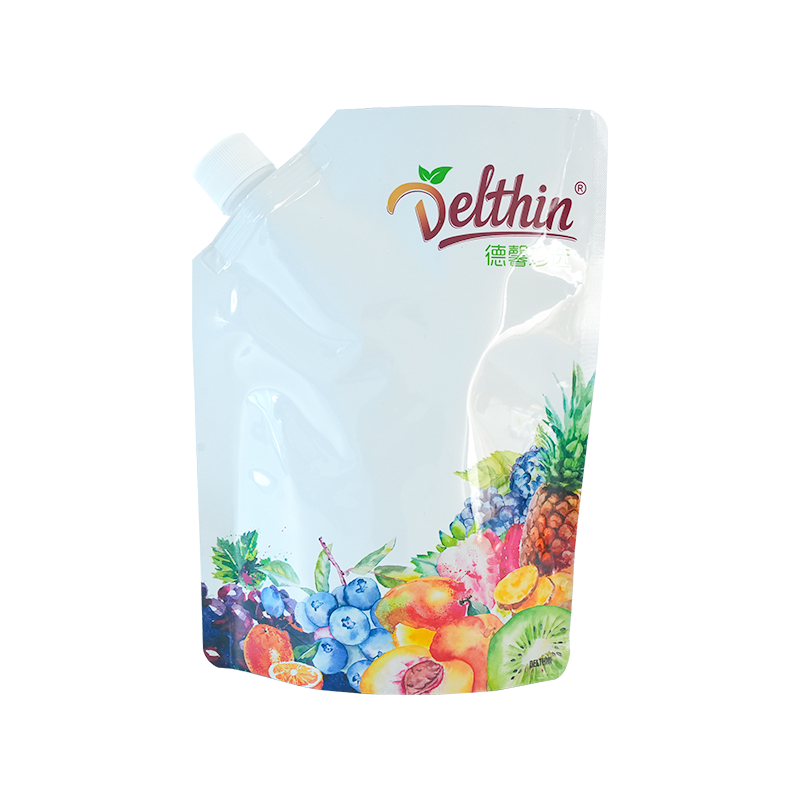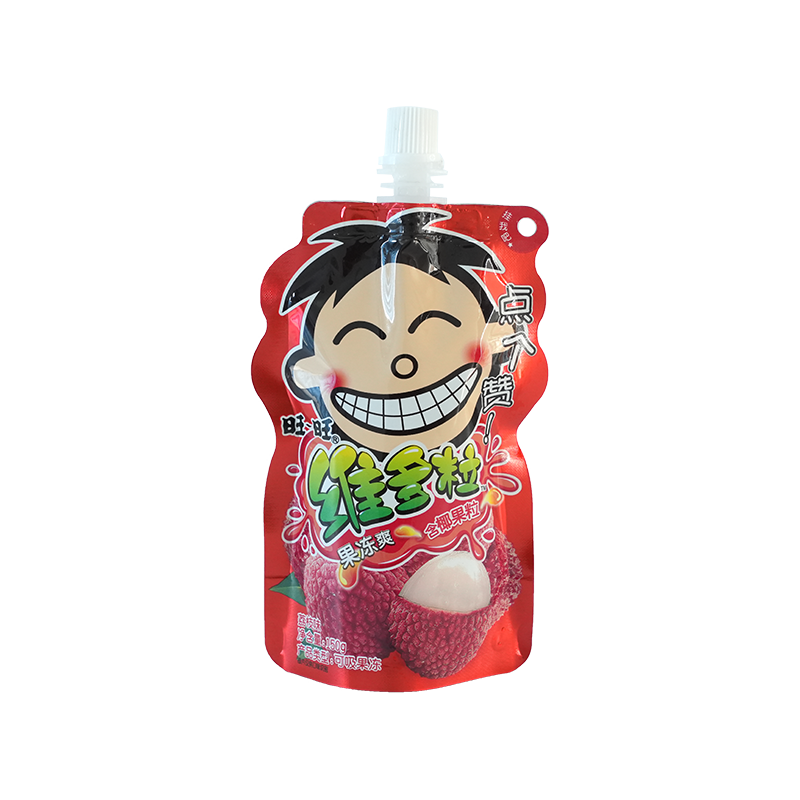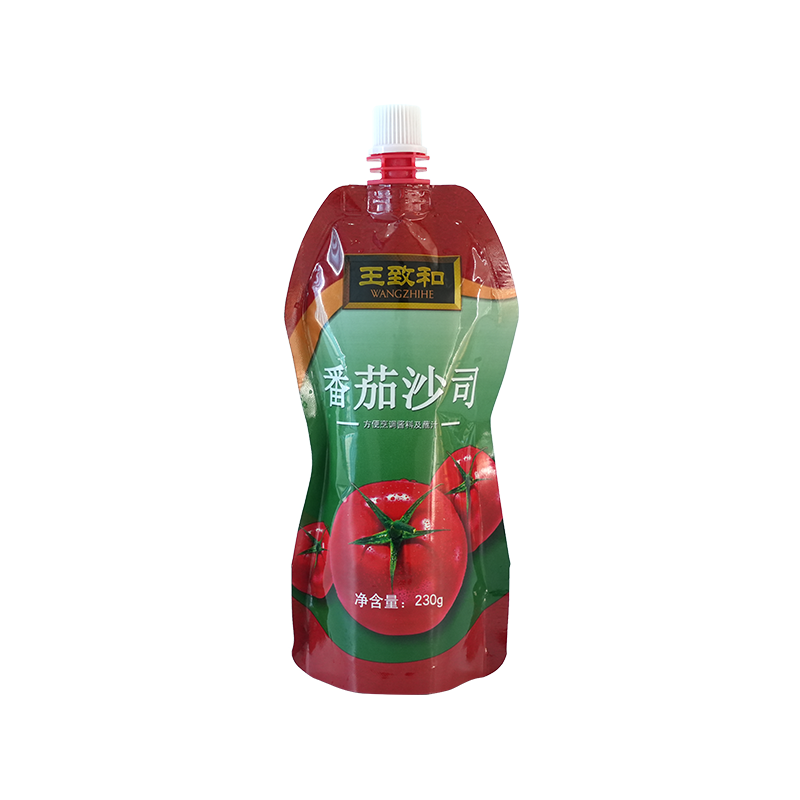1. The core role of the bottom heat seal strength of self-supporting bags
The bottom heat seal area of the self-supporting bag is a key structure that bears the weight and pressure of the contents. For a 100-gram yogurt self-supporting bag, the static pressure of the liquid material during the filling process, the dynamic load generated by the transportation vibration, and the thermal expansion and contraction effect caused by the temperature change of the storage environment will all form continuous stress on the bottom heat seal part. If the heat seal strength is insufficient, it may cause quality accidents such as bag explosion and leakage, which will not only affect the product quality, but also may cause consumer complaints and brand reputation loss.
The essence of heat seal strength is the bonding force between material molecules at the heat seal interface. Under high temperature and high pressure, the heat seal layer materials melt and penetrate each other, and form a strong bonding interface after cooling. For self-supporting bags with multi-layer composite structures (such as PET/PE, BOPP/CPP, etc.), the heat seal layer is usually a thermoplastic material such as polyethylene (PE) or polypropylene (PP), and its melting characteristics and molecular chain activity directly determine the formation mechanism of heat seal strength.
2. Key factors affecting the bottom heat seal strength
Material system design
The heat seal performance of the stand-up bag is closely related to the melting temperature, melt flow rate (MFR) and thermal stability of the material. Taking the gravure 100g yogurt stand-up bag as an example, if low-density polyethylene (LDPE) is used as the heat seal layer, its melting temperature is about 105-115℃, and the melt flow rate is high, which is conducive to the rapid formation of a sealing interface; while linear low-density polyethylene (LLDPE) has a higher heat seal strength, but requires a higher heat seal temperature (120-130℃). In addition, the interlayer peel strength of the composite film will also affect the heat seal effect. If the peel strength is insufficient, the heat seal interface may separate from the layers when subjected to force, resulting in a decrease in the measured heat seal strength.
Heat seal process parameters
Temperature: The heat seal temperature needs to be higher than the melting temperature of the heat seal layer material, but too high a temperature will cause the material to degrade or over-melt, forming a "root cut" defect (the heat seal edge becomes thinner and brittle). For PE materials, the heat sealing temperature is usually controlled at 140-180℃, which needs to be adjusted according to the material thickness and structure.
Pressure: The heat sealing pressure needs to ensure that the heat sealing interface is fully contacted and the air is exhausted, but excessive pressure may damage the heat sealing layer structure. For a 100g yogurt self-supporting bag, the heat sealing pressure is generally between 0.2-0.4MPa, and the pressure needs to be increased accordingly when the total thickness of the composite film increases.
Time: The heat sealing time needs to ensure that the material is fully melted, but too long a time will increase energy consumption and may cause deformation of the heat sealing area. The typical heat sealing time is 1-3 seconds, which needs to be determined through process verification.
Influence of printing process
In the gravure printing process, the amount of ink applied and the degree of drying will affect the melting effect of the heat sealing layer. If the residual solvent of the ink is not completely volatilized, air gaps may be formed at the heat sealing interface, reducing the heat sealing strength; and if the ink layer is too thick or the adhesion is insufficient, the local bonding force of the heat sealing interface may decrease. Studies have shown that the heat seal strength of the gravure printing area is usually 10-20% lower than that of the non-printing area, so it needs to be compensated by optimizing the ink formula (such as using high temperature resistant ink) and adjusting the heat seal parameters (such as increasing temperature or pressure).
3. Test method and standard for bottom heat seal strength
Test principle and equipment
The heat seal strength test usually adopts the T-type peeling method. The tensile tester applies axial tension to the heat seal sample, measures the maximum load value of the heat seal part from initial slip to complete separation, and finally characterizes the heat seal strength with the force value (N) per unit width (15mm). The test equipment must meet the requirements of standards such as QB/T 2358-1998 "Test method for heat seal strength of plastic film packaging bags", including high-precision force sensor (accuracy ±0.5%), controllable stretching speed (300±20mm/min) and standard environmental adjustment (23±2℃, 50±5% RH).
Industry standards and thresholds
Depending on the application scenario, the heat seal strength requirements vary. For example, the heat seal strength of cooking bags is usually required to reach 40-50N/15mm, while the sealing strength of aseptic packaging of liquid food needs to be ≥1.5N/15mm to avoid leakage. For 100g yogurt self-supporting bags, combined with factors such as filling pressure (0.5-1.5bar) and transportation vibration, the bottom heat seal strength is recommended to be ≥30N/15mm to ensure safety under static pressure and dynamic load of the contents.
4. Optimization strategies in practical applications
Structural design optimization
The width and shape of the bottom heat seal area have a significant impact on the strength distribution. The use of widened heat seal edges (such as 8-10mm) or wavy heat seal structures can effectively disperse stress and reduce the risk of local rupture. In addition, padding tetrafluoroethylene woven cloth under the heat seal knife can form a uniform pattern reinforcement rib structure to improve the tear resistance of the heat seal interface.
Dynamic control of process parameters
The production line needs to be equipped with intelligent heat sealing equipment to monitor and adjust the heat seal temperature, pressure and time in real time. For example, the use of a dual PID temperature control system (accuracy ±1°C) and a pressure feedback adjustment device can ensure the consistency of heat sealing of different batches of products. For the gravure printing area, the effect of ink on the heat sealing effect can be offset by local temperature compensation (such as increasing 5-10°C).
Quality control and testing
Establish a full-process quality monitoring system, including raw material entry inspection (heat sealing layer melt index, composite film peeling strength), online inspection (heat sealing appearance, sealing) and finished product sampling (heat sealing strength, pressure resistance test). For 100g yogurt self-supporting bags, it is recommended to use air pressure leak detection equipment for 100% online testing to ensure that the bag leakage rate is less than 0.1%.

